Research Article - Journal of Drug and Alcohol Research ( 2022) Volume 11, Issue 7
Technologies: Additions of the New Society, Perception and Attitude of the Student, Interdisciplinary study
Fatima Llamas-Salguero1*, Yolanda Deocano1, Maria Jose Flores-Tena2 and Silvia Pradas-Montilla32Didactics and Theory of Education, Autonomous University of Madrid, Spain
3Department of Education, Alfonso X el Sabio University, Spain
Fatima Llamas-Salguero, Department of Education and Psychology, University of Extremadura, Spain, Email: fatimalls@unex.es
Received: 12-Jul-2022, Manuscript No. jdar-22-70908 (PQ); Editor assigned: 14-Jul-2022, Pre QC No. jdar-22-70908; Reviewed: 28-Jul-2022, QC No. jdar-22-70908; Revised: 02-Aug-2022, Manuscript No. jdar-22-70908 (R); Published: 09-Aug-2022, DOI: 10.4303/jdar/236187
Abstract
The use of Information and Communication Technologies (ICT) is increasing among young people, which increases the risk of digital addictions. For this reason, it is necessary to favor a positive attitude that promotes its safe and critical use and allows avoiding negative consequences that, at the health level, can cause an excessive use of technologies. This makes it necessary for the educational field to intervene. This research article analyzes how a positive attitude is promoted in Primary Education centers through the use of ICT and offers an approach to the digital perception that students have. In this study, the survey method is used, using a questionnaire as an instrument. In general and in view of the results obtained by descriptive e inferential analysis, it is concluded that the use of ICT in the classroom will depend largely on the student’s inclination with ICT. That fact is contributed by the knowledge of the technologies themselves and their use by teachers and students. This can be observed in the sixth grade students of Primary Education (PE) that does not have a negative attitude to ICT so that the implementation of ICT and their effective use would be advisable for the teaching learning process.
Keywords
Communication; Information; Innovation; Multimedia Learning; Students; Teachers; Technologies.
Introduction
The XXI century is posing new challenges among which behavior in digital environments stands out, which must be faced by teachers, students, families, etc... These challenges are faced by adopting new perspectives focused on new ways of doing, being and thinking in all areas but, above all, in education so that the new generations make safe and critical use of Information and Communication Technologies. (ICT) and do not become a reason for addition. An example of adaptation to the digital society is the increasing provision of technological resources to educational centers: ools and applications that help to classrooms and schools modernization offering different ways of online communication. However, it must be emphasized that in order to adapt to these changes imposed by the digital society, a change in culture and mentality is required the change of culture and mindset. This process affects all educational systems, both national and international. We have experienced a historical development with the inclusion of ICT properly adjusted in the schools, as the European Commission indicated in 2010 that the internet connections in all the schools must be a high speed connection in order to facilitate the access to internet for teachers and students making available the multimedia resources that are in it. This process is always developed with the concern of the established competencies compliance as cored in these projects for the e-learning initiative and in the coming years for its inclusion in the society as the basis of digital literacy. In fact, currently and in the pedagogical field, competencies “bring the real world to the classroom, design learning situations focused on problem solving, favor learning through collaboration, new technologies and focus the didactic process on learning” [1]. Moreover, and according to Silva and Lázaro-Cantabrana, educational innovation should be contributed through the use of technology as a key aspect for learning [2].
The inclusion of ICT in the teaching learning process must be linked to the development of education in the new era of digitization, favoring the potential of ICTs and avoiding their risks (including technological additions), and it will occur when the school learning and the society goes in the same direction [3]. For make this possible, the students collaborating with the teachers must be convinced of the aspects and methodology leading to an improved knowledge generation and not merely the information mechanization as a tool or a technology application, which generates a greater risk of addiction and can imply alteration of the psychological well-being of the students. In Spain there are a number of practices that can be taken as a reference, such as those of Cebrián de la Serna [4] and Paul Pons [5]. These refer to large communication systems such as: video, computers and telecommunications, not only to the computers (hardware) that enable communication but the development of their applications (software) [6]. In addition, studies such as those by Lanuza, Jiménez and Cabero and Cabero and Valencia add more value to the inclusion of ICT in the educational field, emphasizing the need to use them for digital empowerment and avoiding the risks of addition associated with its use [7-9].
The technologies must be compared with conceptual elements that are going to allow their operation, as said by Ortega “it consists of two things: first one is the business plan invention, it is a method or procedure and second one that is the plan implementation” [10]. Technology is the “technique that uses scientific knowledge”, although, as it is pointed by Bunge, “The new technologies only share with science the method”. Thus, when we talk about investment in new technologies for the schools, in any case it should be reduced to certain electronic equipment, more or less sophisticated, we must refer to methods of work that should also be included within this concept and are largely what make its existence possible, both in primary education and in secondary education and higher [11-15]. Adopting this perspective supposes giving greater value to ICT and recognizing the role that the educational environment acquires as a generator of appropriate behaviors to promote a safe, critical and useful use of technologies, avoiding risks of additions in an increasingly digital society.
In a relatively short period of time, the new technologies have been incorporated into all school subjects. At the beginning with the subject of computer science that provided the basis for computer use, later, as a cross curricular tool in all subjects, and finally an importance beyond of the school considering the knowledge and use of new technologies as a core competency of the Compulsory Education, which establishes the curricular subjects in Primary Education in Spain. The education authorities are betting on the widespread incorporation of the new technologies in the schools, and each day is more common for students, teachers and families the use of these technologies to access the most relevant information risk free.
The developments produced by ICT in the educational system, has such importance that is trying to develop different ways of working. These ways of working affect the formation and the startup phase of teachers in the school. Then to start to understand the impact the use of ICT tools and applications in the school is necessary to know the opinion that has the students about them. For this reason, our main objective was to assess the students’ attitudes to ICT in the teaching learning process. In particular it aims to inquire the student’s opinion on ICT to encourage teachers and authorities on the optimal processes for include its use in the classroom and encourage positive attitudes that promote its safe use.
Materials and Methods
Experimental design
The study conducted is a survey design using the questionnaire as a tool for information gathering. The questionnaire has a closed question with two possible outcomes “Positive” and “Negative”, and a series of open ended questions that allow the respondent the freedom to provide more details and points of view regarding educational contexts and technologies applied on it.
The closed question was: “What do you think about the Information Technology and Communication?” This question is related with some guided open questions, in order to determine the perceptions of students in relation to the ICT with the following indicators of this study: Understanding of the tools and applications, usability as a work tool in the future, accessibility to students and teachers, interaction in the classroom, active communication, speed and ease of use and educational support.
The questionnaires have been distributed in the last ten years, creating a prospectus that gives Primary Education trends in the context of the Spanish public education.
Participants
The population analyzed in this research is the 6th grade pupils of Primary Education (PE) of the Nursery and Primary Education Schools (NPES) of the Community of Madrid. The sample is composed by 1770 students belonging to 50 different schools (Table 1). This sample was made randomly.
Table 1: Distribution in the different districts of the Community of Madrid.
| Referencia en gráficas | CENTRO | NORTE | SUR | ESTE | OESTE |
|---|---|---|---|---|---|
| 1 | Moncloa-Aravaca 1 | El Molar | Parla | Torrejón de Ardoz 1 | Boadilla del Monte |
| 2 | Moncloa-Aravaca 2 | Colmenar Viejo 1 | Leganés | Torrejón de Ardoz 2 | Collado de Villalva |
| 3 | La Latina1 | Colmenar Viejo 2 | Móstoles | Loeches | Galapagar |
| 4 | La Latina 2 | San Sebastian de los reyes 1 | Aranjuez | Arganda del Rey | Guadarrama |
| 5 | La latina 3 | San Sebastian de los reyes 2 | Valdemoro | Rivas vaciamadrid | Majadahonda |
| 6 | Retiro | San Sebastian de los reyes 3 | Cienpozuelos | Alcalá de Henares 1 | Pozuelo de Alarcón 1 |
| 7 | Ciudad Lineal | Tres Cantos | Getafe | Alcalá de Henares 2 | Pozuelo de Alarcón 2 |
| 8 | Puente de Vallecas | Soto del Real | Parla 2 | San Fernando de henares | Las Rozas |
| 9 | Chamberí | Algete | Pinto | Coslada | Torrelodones |
| 10 | Hortaleza | Alcobendas | Fuenlabrada | Villalbilla | Villanueva del pardillo |
We start from the 5 districts in which is divided the Community of Madrid: North, South, East, West and Central. The choice of schools per district is based on the official register of NPES of this Commonwealth. This research is developed in Madrid due to act as a reference for be the capital of Spain. Furthermore, the distribution in districts allows us to assess different socio-economic and educational environments, and the differences resulting of the ICT implementation system in these different districts.
Statistical analysis
The statistical analysis of data was performed using the SPSS Stadistics 25 software for Windows environments. As a first step the normality and homogeneity of variances is assessed. We also carried out a descriptive analysis of the student’s sample.
In each of the calculations made we considered the number of valid cases, excluding cases with missing values. In frequency tables is indicated the absolute frequency of valid cases for each measured variable (Frequency), the percentage frequency (Percentage), percentage frequency calculated on valid cases i.e. without considering missing values (Valid Percentage) and the cumulative percentage frequency (Cumulative Percentage).
As measure for the association of the variables evaluated in frequency tables, we used chi-square (Pearson Chi-Square). When this value is <0.05 it is indicating that the study variables are related. In some results of contingency tables can also see the likelihood ratio (Likelihood Ratio). For each of them is always indicated the statistical significance, which was predetermined as p<0.05. Having demonstrated the association between two nominal variables, we assessed the strength of that association with the contingency coefficient (Contingency Coefficient). When deemed necessary, the mean values were compared, for example, the age of students, for which T test was used for two independent samples. This test performed simultaneously provides the Levene test about variances equality. In all cases it was indicated as confidence level, 95% and the cases with missing values were excluded. We performed the Levene test (F), as well as the statistic (t), its degrees of freedom (gl), the bilateral critical level (bilateral significance), the difference between the mean values of each group (average difference), the standard error of this difference and the lower and upper limits of the confidence interval at 95%.
Results
The questionnaire results are shown distributed in the five districts studied, to clarify the differences due to the socio-economic and educational variables in which the schools are framed.
Central district
In the central district, the 85.7% of the students i.e. 269 of the 314 that make up the sample, have answered that think that ICT are positive in the question closed (Figure 1). Regard to the open questions the answers have been gathered in the following replies: “It is important because they learn easily and have fun with it”, “it is well understood”, “they learn new things”, “it allows more activities”, “it is very useful to gather information easily “,”it is faster “,”it is important for communication with others”, “it helps them to study”. Although it should be noted that some students have felt that in their school the tools they have are not enough for everyone. Students who think that ICT are negative correspond to 3.20%, only 10 of the 314 students negatively valued ICT in the closed question.
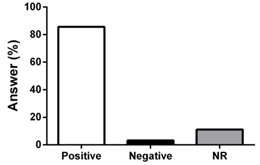
Figure 1: Central district: Closed questions about whether ICT are positive.
The general opinion that students have distributed by NPES of the Central District related to ICT is positive (Figure 2). Nevertheless, some clarifications are necessary: Students belonging to Ciudad Lineal and La Latina 3 NPESs show that they like ICT in full with 100%, while a lack of interest for ICT is shown in the Moncloa-Aravaca 2. We emphasize that, although the percentages are not very high, the responses of the students on the use of ICT were negative in some schools near to El Retiro Park with an 11.8% of negative response (2 of the 17 students of this school) and La Latina 2 with a 14.3% (3 of the 21 students of this school).
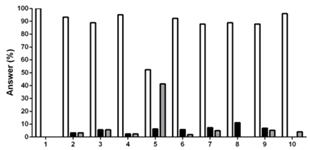
Figure 2: Central district: General opinion that students related to ICT.
North district
The 85.5% of the students, 354 of the 414 that make up the sample, have answered that ICT are positive (Figure 3), where the answers to the open questions are common in terms of “its effectiveness”, “the wide variety of activities that can make learning more and entertaining themselves at the same time” and “the ease to find information without limits”, emphasizing that they see ICT as a “great source of knowledge” and “it helps them to communicate”, “it improves them in work”, “it facilitates teaching them “,”it is helpful in the school” and “it is very funny”. They think they are “better to work with ease”, “fast”, “they are very practical revealing new techniques” and “it helps them to understand everything better”. Some students stress that are effective but “become a distraction in sometimes”, also they say that being easier to find the information they become “lazy students”. Students who think that ICT are negative corresponding to a 5.30%, only 22 of the 414 students ICT negatively valued.
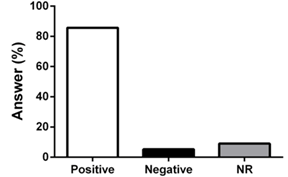
Figure 3: North district: Open questions about whether ICT are positive.
It can be seen that the opinion about ICT of the students is associated to the school where they belong, with a probability (p=0.440) and an analysis of variance (F=38.02), so in this case as in the previous district, there are significant differences between the responses of students from different schools studied (Figure 4). Moreover, the response will be conditioned by the use made in the classroom by teachers. Students belonging to the El Molar and Alcobendas NPESs show that they like ICT in full with 100% of favorable responses. On the other hand, there is a lack of interest about ICT in San Sebastián de los Reyes 2 NPES where the 40% of the student does not answer the question.
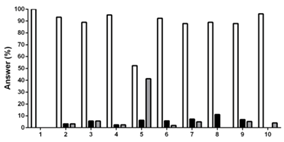
Figure 4: North district: Responses of students from different schools.
We emphasize that although the percentages are not very high, the responses of the students on the use of ICT were negative (Figure 4) in the schools in the areas of Soto del Real with a 11.10% (4 of the 36 students) and Tres Cantos with 7.30% (3 of the 36 students).
South district
The 90.10% of the students, 408 of the 453 that make up the sample, have answered that think that ICT are positive (Figure 5) in relation to the closed question that was formulated to them. The most common answers to open questions are focused on: “the effectiveness that they have”, “the great variety of activities that can make learning more and entertaining themselves”, “the easiness to find information without limits”. They highlighted ICT as a “great source of knowledge” and “it helps them to communicate”, “they improve with ICT at work”, “it facilitates teaching them”, “it is helpful in the school “ and “it is very funny “. They think “it is better to work easy and fast”, “they are very practical revealing new techniques” and “it helps them to understand everything better”. Some students stress that ICT are effective but “become a distraction in sometimes” and “there are not enough for everyone”. These replies as in the previous cases have a double reading: The students offer a great response to ICT tools and applications in the classroom, even saying that they are good for learning and they are learning more but sometimes it becomes a distraction, and you have not enough tools for everyone. These distractions in many cases are not detected by the teachers and in many other cases are linked to their training.
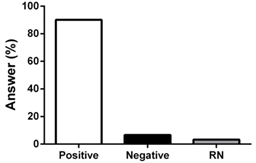
Figure 5: South district: Closed questions about whether ICT are positive.
Students who think that ICT are negative correspond to 6.6%, only 30 of the 453 students valued the ICT negatively with opinions as “they find its use difficult and its functions learning”.
However, it can be seen that unlike the rest of the districts, the ICT opinion of the students is not associated to the school where they belong with a probability (p=0.204) and a Chi-squared (Chi2=3,178) then in this case there is no significant difference between the responses of students from the different schools studied in this district.
The general opinion that students have about ICT is positive (Figure 6). Some students such as those belonging to the Móstoles NPES show that they like ICT entirely with a 100%. In this southern area, it is not seen any lack of interest in ICT as we can see (Figure 6) where all schools percentages exceed 70%.
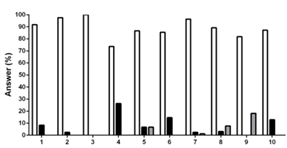
Figure 6: South district: General opinion that students related to ICT.
East district
The 81.4% of the students, 262 of the 322 that make up the sample, have answered that think that ICT are positive (Figure 7). Some open responses are: “it is good”, “it provides information and they learn in a funny way”, “it is practical and entertained” etc... Some even have answered that the teacher has created a blog and they are very happy because they can see their “things”. They believe that these tools are good for education and “help them when they are studying”, they “love” ICT but they need to be careful “to not get into a mess”. Most agree that “it is very important” and “keep us very well informed”. They believe that “it is a very useful and convenient source of information”. Other students point out that they pay more attention in the lectures when ICT are used; it is important, interesting and basic for communication... Some other students believe that “they preferred to search the information in the books” and that “they do not like too much”, another general complain is that “more computers in the classroom are needed”. The students who think that ICT are negative correspond to 5.0%, only 16 of the 322 students valued the ICT negatively.
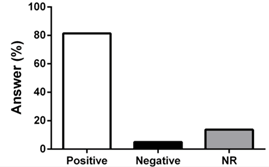
Figure 7: East district: Open questions about whether ICT are positive.
As in the abovementioned districts we can confirm that there are significant differences between schools in relation to the views of the students on ICT (F=10.316, P=0.000). The Scheffe multiple comparison indicates that this difference is due especially to the responses of the students in the school of San Fernando de Henares, which were statistically different (P<0.05) than all other schools except the center belonging to Alcalá de Henares 2.
The general opinion of the students related to ICT is positive (Figure 8). Some students as those belonging to the Arganda del Rey NPES (97.7%) and Coslada NPES (97.9%) show that like ICT entirely with a 100%, while there is a lack of interest in ICT in the Alcalá de Henares 2 school. We emphasize that although the percentages are not very high the responses of the students on the use of ICT were negative in some schools of the areas of Loeches with a 13.0% (6 of the 46 students at the school) and Alcalá de Henares with a 15.5% (2 of the 16 students).
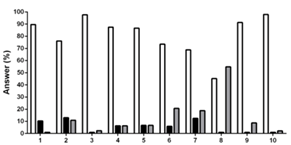
Figure 8: East district: General opinion that students related to ICT.
West district
The 86.0% of the students i.e. 234 of the 267 that make up the sample, have answered the question closed as they think that ICT are positive (Figure 9) between their responses we would highlight the following: “They have fun using ICT”, “it is not bored”, “it entertains them”, “they learn things that like more”, “the time goes fast”, “they enjoy it”, “it is very useful”, “it is very easy”... Some students point out it as innovation contributors and that “it is not frequently used” and “there is not enough equipment”. As in previous cases they add that “they can find information more easily”, “it is fun and interesting,” “they are very convenient and fast”, “it is easy to work, communicate and learn with ICT”. Some students believe that the equipment in the school is not enough. Students who think that ICT are negative correspond to 3.0%, only 18 of the 267 students valued ICT negatively.
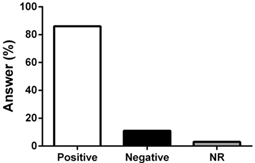
Figure 9: West district: Closed questions about whether ICT are positive.
In this district between the responses of the students anyone mention that learning is improved with the use of ICT but it is clear the great acceptance that exists in this population as it is reflected in other districts.
The general opinion that students have about ICT as in the cases discussed above is positive (Figure 10). Some students as those belonging to Majadahonda, Guadarrama, Pozuelo de Alarcón, Villanueva del Pardillos NPESs show that like ICT almost entirely. We emphasize that although the percentages are not very high, the responses of the students on the use of ICT were negative in some schools in the Collado Villalba area with a 19.4% of negative response (7 of the 36 students). This reflects the acceptance of ICT in various NPESs of the western district. The importance of these opinions, as it has been reflected throughout the article, is in the great success that the students of this district presents and in the training and equipment that the schools have to achieve this demand, not simply using ICT but being aware of how to use them to generate knowledge in the students and the interaction is not a merely projection of activities.
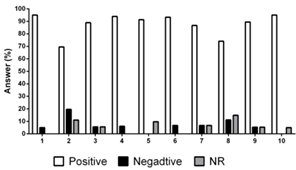
Figure 10: West district: General opinion that students related to ICT.
Community of Madrid
In the Figure 11 it is shown the data obtained from the questionnaire given to all the students of the 50 NPES distributed across the districts north, south, east, west and center of the community of Madrid. Once we have analyzed the questionnaires referred to the descriptively open questions, the students answered the closed question, “What do you think about the Information Technology and Communication?” in this sense. A 86.3% of the students, 1527 over 1770 in the sample, have answered that they think the ICT are positive, their answers to open questions are characterized by the following comments: “It is important because we learn easily and have fun at the same time”, “it allows to do many things”, “it is easy to learn”,” we learn new things “,”it is very interesting”, “it is very funny “,”it is easy to use”, “it allows a lot of activities, while it is very useful for gathering information easily”, “it is faster”, “it is important for communication with others”, “it supports the study”… Among all the answers, the most of the students answered in this sense, but some of them believe that the tools in their school are not enough and are not used. However, it is important to highlight that all the public schools provision in the field of new technology is the same within the community of Madrid and this observation of the students is due to a subjective perception.
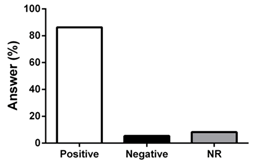
Figure 11: Community of Madrid: Total data from student questionnaires for all districts.
Students who think that ICT are negative correspond to 5.4%, only 96 over 1770 of the students appreciate ICT negatively (Figure 12). Taking into account these data it is understood that the acceptance of students towards ICT is very high. Among the diverse opinions, the most repeated are like: “we just do not know about them”, “it can be a bad habit”, “it can be used for some things but the textbooks are preferred”, “they are a waste of time”. These responses are very interesting due to they do not know about ICT because in many schools there are not equipment, or it is not used, or it is just used to projections, which makes these students completely unaware of the functionality of the tool. It really attracts our attention that “it can be a bad habit”, in general, it refers to the use of the technology by the students at home, the students become accustomed to use consoles or computers without any established control beyond that the provided by families. The teacher can give some operating guidelines to use the tools or some programs that make possible for the students to know and learn how to operate and manage the interaction with the technological means, Internet browsers, social networks, kind of games.
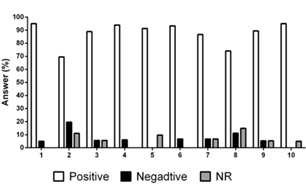
Figure 12: Community of Madrid: Students who think that ICT are negative.
A point to analyze in the survey responses is the gender gap, in this sense we can analyze if there is an impact of some of the topics set by the society, as the boys like to use more the technology than the girls. Then, we made a distinction of responses by sex and we analyzed the differences linked to it. In the public schools in the Community of Madrid with a similar number of registrations of both sexes (Table 2) there were no significant differences in the general perception of ICT (positive response to the question closed) (Table 3), but some differences were found in terms of the issues they had to give this positive or negative feedback.
10 cells (,0%) have expected count less than 5. The minimum expected count is 6,92
Table 2: Gender distribution on the Community of Madrid.
| Frecuency | Percentage | |
|---|---|---|
| Male | 921 | 52 |
| Female | 818 | 46,2 |
| Total | 1739 | 98,2 |
| Lost Data | 31 | 1,8 |
| Total | 1770 | 100,0 |
Table 3: Chi-Square Tests.
| Value | DF | ASYMP.SIG(2-SIDED) | |
|---|---|---|---|
| Pearson Chi-Square | 1,685 1 | 2 | 431 |
| Likelihood Ratio | 1,701 | 2 | 427 |
| Linear-by-Linear Association | 1,676 | 1 | 195 |
| N of Valid Cases | 1739 |
ASYMP. SIG. (2-SIDED SIG). (2-SIDED)
Regarding all the students that make up the total sample, the 52.0%, i.e., 921 over 1739 of the students are boys, while 818, i.e., 46.20% are girls.
Discussion
Education in the context of ICT must provide the necessary conditions to optimize the teaching learning process and promote the transfer of knowledge, skills and attitudes minimizing, as far as possible, the risks associated with the use of ICT. The attitude is an important issue to be addressed in the design and development of learning environments since it involves cognitive, emotional and behavioral components that condition it and, in the case of ICTs, it can considerably reduce the risk of suffering addictions [16,17]. So much so, that for digital acquisition and improvement it is necessary to have a favorable digital attitude capable of promoting mastery of ideas, critical awareness or active participation in social environments. Learning environments should reflect the possible uses of the knowledge expected for the students in order to prevent loss of knowledge [18-21], reduce the digital divide and address technological challenges so that technologies do not pose a risk to physical, psychological and social well-being [22]. The implementation system of the ICT must be created in an educational context most appropriated, providing and preserving the links with the environment outside the classroom. In addition, the teachers should encourage students to participate with a positive attitude towards the use of ICT and the active construction of knowledge. This requires an open learning environment instead of environments focused on a mere transmission of data for learning [23-28]. The cooperation and interaction in the classroom are important to encourage the acquisition of learning skills, problem solving skills, and social relationships [29-34]. Finally, since in the classroom we can find capabilities and different perceptions, regarding the use of ICT, these differences must be considered to be one of the key criteria for the practice of the effective teaching learning process in the classroom [35-41]. Therefore, the responsible authorities should adapt the learning environment to the needs and abilities of the students individually making the students themselves aware of the risks that exist in the technological environment. However, it is also necessary for them to emphasize that these risks should not prevent the use of ICTs but rather the need to exercise critical use of technology.
The ICT can contribute to the creation of powerful learning environments in different ways. The ICT offer opportunities to access a lot of information across multiple sources of information and displaying information from multiple perspectives promoting authentic learning environments. The ICT can also make complex processes more easily understood through simulations, which contributes to create an optimal learning environment [42-45]. Moreover, ICT can be a tool for curriculum differentiation, providing opportunities for adaptation of learning content and tasks to the needs and abilities of each student individually and provide tailored information [46-49].
However, some researches shows that the approach in schools, in general, aims the use of ICT based in the traditional knowledge showing how the team of teachers forgets the importance of promoting positive attitudes around ICT [50-55]. Furthermore, in a study about the impact of ICT over the student performance, involving 60 schools, it was found that the proportion of lessons involving ICT was generally small. We found some positive relationships between the amount of ICT use and student performance, but the relationship found was not constant in all the areas at all key stages. Therefore, the authors assume that the way of use is important but also the digital attitude that is possessed [56-59]. In the same way our observations are pointed, due to in NPESs with the same ICT implementation system, the students have different perceptions regarding infrastructure provision and use of this, noting that “the tools in our school are not sufficient and not used”, compared to the students who receive resources and an appropriate use, stating that “it is important because they learn easily and have fun”, “it allows to do many things, “” it is easy learning”, “ it can be easily used “,” it allows a great number of activities” and “it serves to support the study. “
Obviously, the attitude of the students towards the use of ICT has a significant impact on the learning environment and this attitude is defined by different factors. In this sense, the teacher skills regarding the use of ICT play an important role [60-62]. Another aspect that may influence, of course, is the access that the students have to the technology [63-66]. This refers not only to the number of computers per student but also for the location of this equipment, for example, in the classroom or in the computer room. Kennewell, consider that it is essential that equipment is placed in the classroom, in order to maximize the curricular opportunities [64]. These authors say that the number of computers available has less relevance.
In addition, teacher’s pedagogical perspectives and their views on how ICT can contribute to the learning environment can play an important role in the actual use of ICT in the school [67-73]. The change to a learning environment more centered in the student where the teachers must create an intellectual environment in which the knowledge is acquired. In particular, this applies to open-composition learning agreements [74,75].
Another fact to consider is the gender differentiation in the use of ICT. It is a proven fact that girls have a less positive attitude than boys in the use of ICT [76-81]. However, in the present study we do not found significant differences associated with gender, based on the closed question that is intended to denote whether students value positively or negatively the use of ICT. This may be due to the fact that the differences are not as large in the young students [82-86]. The students in our study were generally positive about the use of ICT.
Nevertheless, if we value the open questions in order to consider which statements lead them to give a positive or negative feedback, we can see that these are differentiated by gender. These differences in attitudes between boys and girls are more common in the aspects related to the proposed technology as a tool for the future against the educational as a support tool in the teaching learning process. While the boys give a positive assessment based on the availability of the tools and applications to the teachers and students, the speed and ease of use of ICT, the confidence in working with them and the plans for getting a job in the future. The positive response of the girls is based on the ease of understanding and learning using ICT, classroom interaction, active communication and educational support. These gender differences may come given by a lower knowledge and skills in the use of ICT. Similar results were reported by Kadijevich [87].
Conclusion
Regarding the data obtained on the perception and and impact of ICT in the students it has been observed that in the different primary schools analyzed, with the same ownership and with the same technological resources, it will exists different answers based on the gender and the belonging to a particular NPES based on the ICT use made by this NPES. This is influenced by the students who have different perceptions within the educational technological environment in which they are developing their learning processes. It is necessary, therefore, to influence the use that these students make of ICT, increasing positive values towards them but also the responsibility to participate in digital environments safely. Only in this way, it will be possible to reduce the risks of the new digital environments, among which are the technological additions, very common among young people.
Regardless of the use in the school, the student view of the ICT was positive independently of the gender, however in the open questions it was found that although there were no differences in the view of ICT related to the student gender, these differences exist related to the different reasons due to the students appreciate the use of ICT. The boys perceive that the ICT are more positive for technological reasons against the girls who stand out the educational reasons. Taking into account all these considerations, both competent authority and teachers, when they carry out a implementation process of technology tools and applications in the schools, they have to make an individualized adaptation according to the specific needs of each technological educational environment that is defined by the different individualized assesments.
The results allow us to conclude that there are differences in the attitude and digital perception that students have, so it is very important to influence the promotion of safe habits in digital environments. In addition, it is vital to promote positive attitudes in the educational field so that young people progressively acquire, and from an early age, a critical attitude towards ICT. In this way, and in coordination with agents from other fields, the digital gap can be reduced, but also the technological additions of young people.
The value of this research lies in providing knowledge about the attitude and perception that students have to educate towards the critical use of ICT. With this, the vulnerability that young people may suffer in the new digital environments is minimized, causing additions that put their physical, mental and social health at risk.
Acknowledgement
None.
Conflict of Interest
The authors declare no conflict of interest.
Author Contributions
Conceptualization
Fatima Llamas-Salguero, Yolanda Deocano, María Jose Flores-Tena and Silvia Pradas-Montilla
Methodology
Fatima Llamas-Salguero, Yolanda Deocano, María Jose Flores-Tena and Silvia Pradas-Montilla
Software
Fatima Llamas-Salguero, Yolanda Deocano, María Jose Flores-Tena and Silvia Pradas-Montilla
Formal analysis
Fatima Llamas-Salguero, Yolanda Deocano
Investigation
Fatima Llamas-Salguero, Yolanda Deocano, María Jose Flores-Tena and Silvia Pradas-Montilla
Resources
Not applicable.
Writing original draft preparation
Fatima Llamas-Salguero.
Writing review and editing
María Jose Flores-Tena and Silvia Pradas-Montilla
Visualization
Fatima llamas-salguero, Yolanda Deocano, María Jose Flores-Tena and Silvia Pradas-Montilla
All authors have read and agreed to the published version of the manuscript.
Funding
This research received no external funding.
Informed Consent Statement
Informed consent was obtained from all the educational centers involved in the study.
Data Availability Statement
The data are not publicly available because the participants did not agree for their data to be shared publicly.
References
- M. Crasovan, Transversal competences or how to learn differently, Triv Pub J, 17(2016), 171-178.
- J.E. Silva, J.L. Lázaro-Cantabrana, La competencia digital de la ciudadanía, una necesidad creciente en una sociedad digitalizada, Edute Elect educ tech, 73(2020), 37-50.
- C. Montaudon-Tomas, I. Pinto-López, A. Yáñez-Moneda, Competencias digitales para las nuevas formas de trabajo: Nociones, términos y aplicaciones. VinculaTégica (EFAM) 22(2020), 1333-1346.
- M. Cebrian, Tecnologías de la información y comunicación para la formación de docentes. Pirámide: Madrid, Spain, 2005. 1-184.
- J. De Pablo, M. Area, J. Valverde, J.M. Correa, Políticas educativas y buenas prácticas con TIC, Graò: Barcelona, Spain, 2010, 1-285.
- F.J. Tejedor, A. García, Perspectivas de las nuevas tecnologías en la educación. Narcea: Madrid, España, 1996, 1-232.
- F.I. Lanuza, M. Rizo, L.E. Saavedra, Uso y aplicación de las TIC en el proceso de enseñanza- aprendizaje,FAREM-Estel Sci J, 25(2018), 16–30.
- I. Janssen, T.J. Plomp, Information technology and gender equality: A contradiction in terminis?, Comp Educ, 28(1997), 65–78.
- J. Cabero, R. Valencia, Y el COVID-19 transformó el sistema educativo: Reflexiones y experiencias para aprender,Int J Educ Res Innov, 15(2020), 218–228.
- F. Ortega, La modernización social como mito, Key Pract Reas, 41(1982), 44-52.
- M. Bunge, La investigación Científica. Ariel: Barcelona, Spain, 1981, 1-235.
- F. Martínez, Investigación y nuevas tecnologías de la comunicación en la enseñanza: El futuro inmediato, Pixel Bit, 2(1994) 3-17.
- J.C. Ros, Innovaciones en el ámbito educativo: TIC y trabajo cooperativo en educación primaria. ATHLOS. Revista Internacional de Ciencias Sociales de la Actividad Física, el Juego y el Deporte, 22(2021), 1-15.
- R.M. Martinenco, R.B. Martín, L. García, Ecologías de aprendizaje en educación secundaria: TIC y aprendizaje informal. Tecnología, Ciencia y Educación 18(2021) 77-97.
- T. Mäkipää, R. Hildén, T. Samulin, The Perceptions of Student Teachers of Online Pedagogical Courses and Assessment Practices in Finnish Subject Teacher Education, Education Sciences, 12(2022)1-16
- G. Centeno, S. Cubo, Evaluación de la competencia digital y las actitudes hacia las TIC del alumnado universitario, J Educ Res, 31(2013), 517-536.
[Crossref]
- A. Collins, Design issues for learning environments, In international perspectives on the design of technology-supported learning environments, 1996, 347–361.
- J.D. Bransford, R.D. Sherwood, T.S. Hasselbring, C.K. Kinzer, S.M. Williams, Anchored instruction: Why we need it and how technology can help. In Cognition, education, multimedia, 1990, 115–141.
- A.M. Correa-Díaz, M. Benjumea-Arias, A. Valencia-Arias, La gestión del conocimiento: Una alternativa para la solución de problemas educacionales, Educare, 23(2019), 1-27.
- Y. Díaz, M.A. Baena, G.R. Baena, Nuevos escenarios de aprendizaje, un reto pedagógico. Revista Atlante: Cuadernos de Educación y Desarrollo, 2018.
- T.M. Duffy, R.A. Knuth, Hypermedia and instruction: Where is the match? In Designing hypermedia for learning, 1990, 199–225.
- A.C. Prince, La brecha digital como obstáculo al derecho universal a la educación en tiempos de pandemia,J Acad, 4(2021), 26-41.
- A. Collins, Design issues for learning environments, In international perspectives on the design of technology-supported learning environments, 1996, 347–361.
- M.J. Hannafin, C. Hall, S. Land, J. Hill, Learning in open-ended environments: Assumptions, methods and implications, Educ Tech, 34(1994), 48–55.
- D.H. Jonassen, K.L. Peck, B.G. Wilson, Learning with technology: A constructivist perspective, 1999, 1-234.
- T. Mäkipää, R. Hildén, T. Samulin, The Perceptions of Student Teachers of Online Pedagogical Courses and Assessment Practices in Finnish Subject Teacher Education. Educ Sci, 12(2022), 1-16
- R.M. Martinenco, R.B. Martín, L. García, Ecologías de aprendizaje en educación secundaria: TIC y aprendizaje informal, Technol Sci Educ, 18(2021), 77-97.
- J.C. Ros, Innovaciones en el ámbito educativo: TIC y trabajo cooperativo en educación primaria, Int J Soc Sci Phy Act, 22(2021), 1-15.
- N. Bennett, E. Dunne, The nature and quality of talk in co-operative classroom groups, Learn Instruc, 1(1994), 103–118.
- M.A. Cruz, M.A. Pozo, A.F. Andino, Las tecnologías de la información y la comunicación (TIC) como forma investigativa interdisciplinaria con un enfoque intercultural para el proceso de formación de los estudiantes, J E-Learn Knowl Soc, 18(2018), 196-215.
- M. Juárez-Pulido, I. Rasskin-Gutman, S. Mendo-Lázaro, El Aprendizaje Cooperativo, una metodología activa para la educación del siglo XXI: Una revisión bibliográfica,Rev Pris Soc, 26(2019), 200–210.
- S.M. Medina, El aprendizaje cooperativo y sus implicancias en el proceso educativo del siglo XXI,INNOVA Res J, 6(2021), 62-76.
- R.E. Slavin, Cooperative learning: Theory, research and practice, 2rd ed; Allyn and Bacon: Boston: United States, 2001, 1-208.
- E.B. Susman, Co-operative learning: A review of factors that increase the effectiveness of computer-based instruction, J Educ Comp Res, 18(1998), 303-322.
- E. Bearne, Differentiation and diversity in the primary school. Routledge: London, England, 1996, 1-284.
- G. Esnaola, M. Reis, D. Marín, Del portal al aula: Interacciones de los materiales didácticos digitales, Camp Virt, 8(2019), 141-156.
- J.L. Fernández-Quero, El uso de las TIC como paliativo de las dificultades del aprendizaje en las ciencias sociales,Digit Educ Rev, 39(2021), 213-237.
- T. Kerry, A. Kerry, Differentiation: Teachers’ views of the usefulness of recommended strategies in helping the more able pupils in primary and secondary classrooms, Educ Stud, 23(1997), 439–457.
- B. Pastora, A. Fuentes, La planificación de estrategias de enseñanza en un entorno virtual de aprendizaje,UISRAEL Sci J, 8(2021), 59-76.
- A. Sanahuja, L. Moliner, F.J. Alegre, Educación inclusiva y TIC: Un análisis de las percepciones y prácticas docentes, J Pedgod, 72(2020), 123-138.
- A.F.G. Castel, La integración de las TIC en los procesos educativos y organizativos,Educar em Revista, 34(2018), 325-339.
- M.J. Flores, H. Almadhkhori, Y. Deocano, Impacto de la robótica en la motivación y socioafectividad de estudiantes de secundaria,Eur J Mol Clin Med, 7(2020), 97-103.
- F. Llamas-Salguero, Repercusiones del uso de las Tecnologías de la Información y la Comunicación en la adquisición de conocimientos en los alumnos de Educación Primaria.
- M.R. Sáez, La educación constructivista en la era digital,Technol Sci Educ, 12(2019), 111-127.
- T. Mooij, Guidelines to Pedagogical Use of ICT in Education. In 8th Conference of the ‘European Association for Research on Learning and Instruction’ (EARLI). Göteborg, Sweden, 26(1999), 25-29.
- E.C. Moya, Hacia una educación inclusiva para todos. Nuevas contribuciones,J Curr Teac Train, 23(2019), 1-9.
- E. Smeets, T. Mooij, The impact of information and communication technology on the teacher, Europ Educ Res, 4(2021), 1-10.
- J. Sosa, A. Bethencourt, Integración de las TIC en la educación escolar: Importancia de la coordinación, la formación y la organización interna de los centros educativos desde un análisis bibliométrico, Hamut, 6(2019), 24-41.
- T.W. Chalkley, D. Nicholas, Teachers’ use of information technology: Observations of primary school classroom practice, Aslib Proceed, 49(1997), 97–107.
- M. Macià, J. Garreta Accesibilidad y alfabetización digital: Barreras para la integración de las TIC en la comunicación familia/escuela,J Educ Res, 36(2017), 239-257.
- L.P. Quiroga, S. Jaramillo, O.L. Vanegas, Ventajas y desventajas de las tic en la educación “Desde la primera infancia hasta la educación superior,Educ thought, 26(2019),77-85.
- J. Richardson, Information Technology: A new path to creativity in education. Editions ESKA: Paris, France, 1997, 1-155.
- M.E.R. Valdez, B.P.S. Trujillo, Los efectos positivos y negativos en el uso de las Tecnologías de la Información y Comunicación en educación,Hamut, 8(2021), 23-32.
- D. Williams, L. Coles, K. Wilson, A. Richardson, J. Tuson, Teachers and ICT: Current use and future needs. Brit J Educ Technol, 31(2000), 307–320.
- J.L. Cueva, A. García, O.A. Martínez, El conectivismo y las TIC: Un paradigma que impacta el proceso enseñanza aprendizaje, Revist Scientific, 4(2019), 205-227.
- I.M.G. Fernández, A.D.C. Calvo, H.S. Fernández, Interacción y uso de tecnologías en los procesos de enseñanza y aprendizaje,Educatio Siglo, 38(2020),119-138.
- C. Harrison, C. Comber, T. Fisher, K. Haw, C. Lewin, et al. The impact of information and communication technologies on pupil learning and attainment. ict. coventry: British educational communications and technology agency, 2004, 1-50.
- Vidal, I.M.G. (2021). Influencia de las TIC en el rendimiento escolar y su impacto en estudiantes vulnerables.RIED. Revista Iberoamericana de Educación a Distancia. 2021, 24, 351-365.
- J. García, S. García, Uso de herramientas digitales para la docencia en España durante la pandemia COVID-19, Comp Educ, 38(2021), 151–173.
- C. Suárez, A. Ros, J. Lizandra, Aproximación a la competencia digital docente en la formación profesional,Dist Educ Magaz, 21(2021),1-24.
- W. Veen, Factors affecting the use of computers in the classroom: Four case studies, 1995, 169–184.
- I. Aguaded, P. Contreras-Pulido, Acceso universal y empoderamiento digital de los pueblos frente a la brecha desigual. Nuevas formas de diálogo y participación.Blan Comm Int Relat, 46(2020), 9-12.
- S. Kennewell, J. Parkinson, H. Tanner, Developing the ICT capable school, Routledge Falmer: London, England, 2008, 1-198.
- OTA, Teachers and Technology: Making the connection, Office of Technology Assessment: Washington DC, United States, 1995, 1-298.
- D.M. Suelves, N.C. Monzonís, V.G. Méndez, Competencia digital ciudadana: Análisis de tendencias en el ámbito educativo,Americ J Dist Educ, 24(2021),329-349.
- D. Bernaschina, Interacción pedagógica en las TIC: Mediación inclusiva en el aula virtual.J E-Learn Knowl Soc, 21(2021), 171-192.
- C. Calero, La llegada de las nuevas tecnologías a la educación y sus implicaciones. International Journal of New Education, 4(2019), 21-39.
- H. Drenoyanni, D. Selwood, Conceptions or misconceptions? Primary teachers’ perceptions and use of computers in the classroom, Educ Info Tech, 3(1998), 87–99.
- S. Higgins, D. Moseley, Teachers’ thinking about information and communications technology and learning: Beliefs and outcomes, Teach Develop, 5(2001), 191–210.
- B. Hokanson, S. Hooper, Computers as cognitive media: Examining the potential of computers in education, Comp Hum Behav, 16(2000), 537–552.
- A. Moreira, M. Zapata-Ros, Presentación del número especial de RED Transición de la educación convencional a la educación y al aprendizaje en línea, como consecuencia del COVID19, Distanc Educ Magaz, 65(2021), 1-8.
- D.S. Niederhauser, T. Stoddart, Teachers’ instructional perspectives and use of educational software, Teach Teacher Educ, 17(2001), 15–31.
- R.D. Hannafin, W.C. Savenye, Technology in the classroom: The teacher’s new role and resistance to it, Educ Tech, 33(1993), 26–31.
- C.M. Keeler, Networked instructional computers in the elementary classroom and their effect on the learning environment: A qualitative evaluation, J Res Comp Educ, 28(1996), 329–345.
- R.S. Guevara, Tecnología y educación: Un estudio de caso sobre las diferencias de género en el uso de las TIC, Per J Educ Res, 12(2020), 89–122.
- B. Huber, J.W. Schofield, I like computers, but many girls don’t. Gender and the sociocultural context of computing, 1998, 103–132.
- V. Makrakis, T. Sawada, Gender, computers and other school subjects among Japanese and Swedish pupils, Comp Educ, 26(1996), 225–231.
- M.J. Masanet, F. Pires, Gómez-Puertas, L. Riesgos de la brecha digital de género entre los y las adolescentes,Info prof, 30(2021), 1-15.
- M. Volman, Gender-related effects of Information and Computer Literacy Education. J Curr Stud, 29(1997), 315–328.
- Ch. Comber, A. Colley, D.J. Hargreaves, L. Dorn, The effects of age, gender and computer experience upon computer attitudes, Educ Res, 9(1997), 123–134.
- A. Durndell, P. Glissov, G. Siann, Gender and computing: Persisting differences, Educ Res, 37(1995), 219-227.
- M.A. Moreira, O.C. Romero, L.F. García El uso escolar de las TIC desde la visión del alumnado de Educación Primaria, ESO y Bachillerato,Educ Siglo, 36(2018), 229-254.
- L. Ortiz, E. López, V. Figueredo, A.H. Martín, Diversidad e inclusión educativa Respuestas innovadoras con apoyo en las TIC, Octaedro: Barcelona, España, 2018, 1-240.
- J.C. Almenara, J. Ruiz-Palmero, Las tecnologías de la información y comunicación para la inclusión: Reformulando la brecha digital,Int J Educ Res Innov, 9(2018), 16-30.
- S.D.A. Del Campo, R.C. Alonso, J.I.G.L. Taboada, Brechas digitales de género. Una revisión del concepto,J E-Learn Knowl Soc, 20(2020),34-58.
- I. Janssen, T.J. Plomp, Information technology and gender equality: A contradiction in terminis?, Comp Educ, 28(1997), 65–78.
- D. Kadijevich, Gender differences in computer attitude among ninth-grade pupils, J Educ Comp Res, 22(2000), 145–154.
Copyright: © 2022 Fatima Llamas-Salguero, et al. This is an open access article distributed under the terms of the Creative Commons Attribution License, which permits unrestricted use, distribution, and reproduction in any medium, provided the original work is properly cited.

